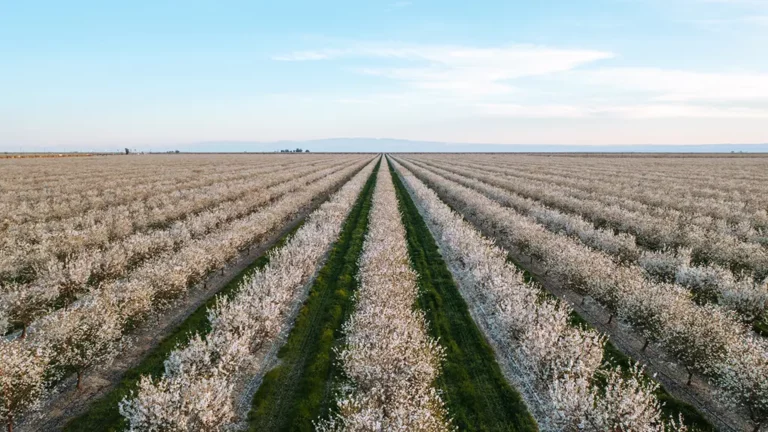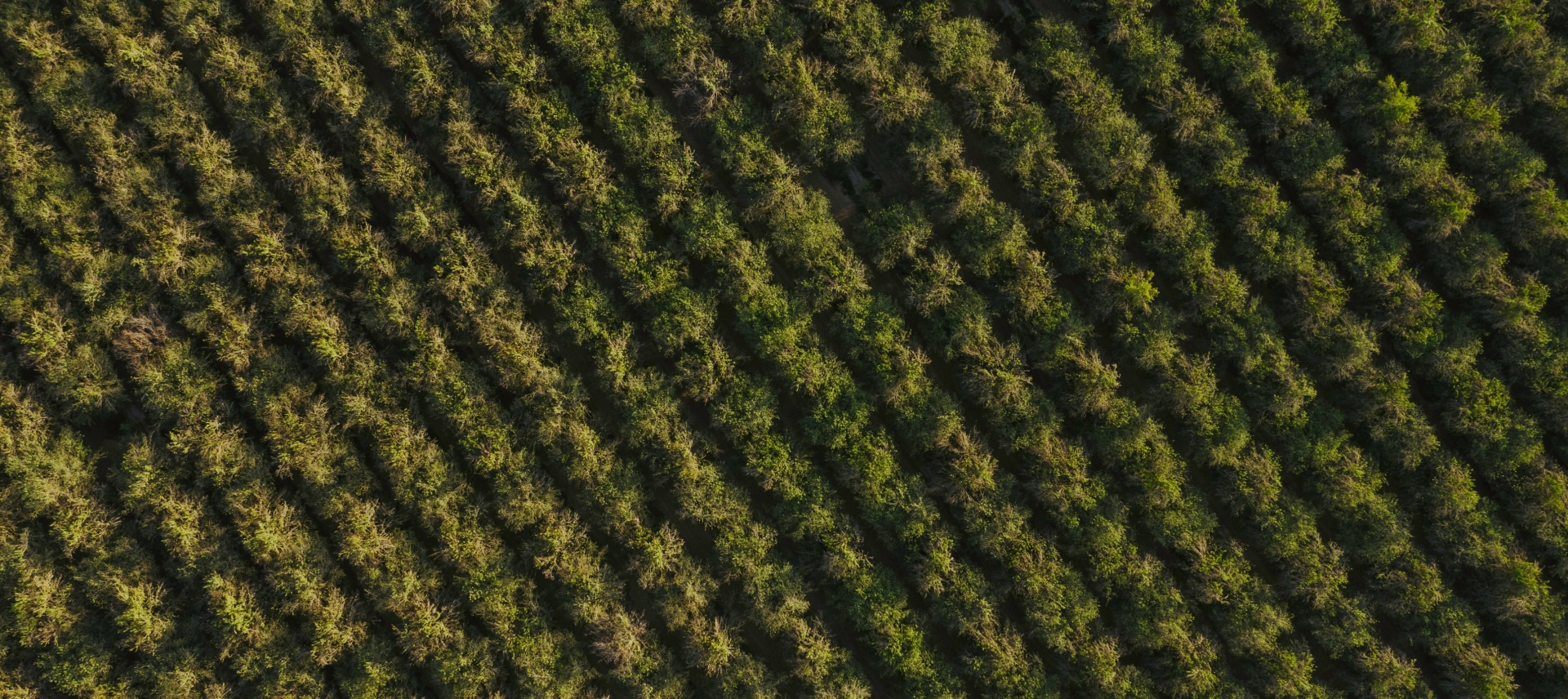Empty cart
Oh no! It appears your cart is empty. Add some almonds to your daily regime with the Treehouse products.
All Blog PostsAlmond Market UpdatesNews
With the 2016 crop starting to take shape in orchards around California, we are pleased to share the Terra Nova & GLM 2016 crop estimate prepared by Michael Grant and Liam Gorman. We hope you appreciate their diligent work and service as much as we do….
Dear Reader,
We fully appreciate that many amongst you would prefer to get the number first, and not have to read our laborious justifications; we considered this, but decided against, as we feel there are some important narratives to be established…
You couldn’t make this stuff up..?
What a difference a year makes! Obviously hindsight is twenty-twenty, but the winter and bloom weather patterns defied all odds and expectations, and growers/handlers whom are now kicking themselves for missing the market would never have bet on this outcome.
Winter was moderately wet, better North than South, and then the bloom conditions were suddenly perfect: hot and dry, producing a very rapid bloom in all areas; this was followed by some more rain, then hot and dry again, then a bit more rain… Perfect!
With a trifecta of good dormancy (with cold and fog), perfect bloom (with average to epic bee flight data), and lovely post-bloom conditions it is perhaps not surprising that the number we usually identify in this report as the “early consensus” in the market is a very high one, with expectations of a massive bumper crop…
We will focus our analysis on the early consensus premise that the 2016 Crop is 2.25 billion pounds, or about 20% higher than 2015 Crop; this would mean 360 million additional pounds which have to come from somewhere: which varieties, from which Counties, and how much additional acreage could contribute this much?
Observations: General
We drove about 1400 miles, and some years we expect to see specific variations: maybe a particular area had a wet bloom, or one variety had a weak bloom… This time around the watchword was “consistency”, an expected reflection of the valley wide weather and bloom pattern.
However, we did not see consistently “bumper” or “loaded” crops, and those trees that were “loaded”, “roped-on”, and “limb breaker” provided a reminder that they were not the norm; a 20% across the board increase basically requires a new all time record yield, and we definitely did not see that; we have argued twice (now a third time) that the 2011 per acre production of 2540 pounds was an outlier.
We did not see very much poor stuff either, so we think the crop looks better than last season, but perhaps not as good as expected? However, what we did see a lot of was orchard removal, which brings us to discuss bearing acreage.
We evidenced many orchards that were either gone, or in the removal process, and also met with farmers who had removed stuff too; we did some background research talking to orchard removal contractors, and we estimate that 35,000 acres have been removed this year, and next year could well be double. The tree removal companies we spoke with are almost fully booked for next year.
The actual bearing acres is fiercely debated, but what really matters for our purposes is how many more than last year are there? We believe about 55,000 acres were added in 2012, so the net gain this season is only 20,000 acres, with a maximum productivity of 30 million pounds, which still leaves us 330 million pounds to find.
Observations: By Variety
We were a week later than usual, and the bloom was early, thus the nuts were generally more developed. In fact, we saw some truly gargantuan kernels, and the old adage of “big crops, small nuts” came to mind: whilst sizing can recover some yield, in the NP in particular, generally this is not an indicator of maximum productivity.
Last season we heard how horrible the NP crop was, and we were skeptical. We finally came up with an estimate of 660 million pounds, which was actually below the real number of 690; for NP to be 20% up this season requires a production of 828, a new all time record… Is this likely, given we hear a lot that the “NP are disappointing”, and that those orchards strong last year are likely to be “off” this year? We just can’t see it, and think that even 750 would be a stretch.
Of course, maybe the other varieties are all massively up? We didn’t see that, and it is very unlikely:
Monterey– looking good, but 2015 was already 10% better than the previous year.
Carmel– have had a 5 year, year-on-year decline, down 15% in 2015, and we know no new plantings are coming in, so even a 10% bounce stretches credibility.
Fritz-super consistent, but not exceptional looking this year; a model of consistency.
Butte/Padre– here there is room for improvement, having been flat last year, but even a 15% increase would mean a best ever B/P crop, and we’re not sure they are that good.
California Varieties– these are growing, with the likes of Alldrich, Independence and Wood Colony; Last season already saw a decent bump, but we can expect another increase this year.
Observations: By County
Coming back to concept, where can we “allocate” a 20% increase within the Central Valley? Let’s do our usual commentary:
San Joaquin– just a few percent variation over each of the last 5 years, and will not break the mould this season; minimal new plantings.
Merced– was down 6% this season over last, so we expect a nice bounce, as this was definitely one of the best looking areas.
Madera– again limited year on year variation, and last season was already an all time record.
Stanislaus– despite a lot of new acreage, production over the last 5 years has been quite flat; a 20% increase over last season would be 310 million pounds… Hard to imagine when the previous best ever was 285?
Fresno– one of the “big swingers” in productivity, ranging from 370 to 443 million pounds over the last five years; also home to much drought stress and reduced productivity, which are unresolved, so we can see an increase this year, but only a modest one; the mega-yields from this region seems to be consigned to history?
Kern/Kings/Tulare– the other one, ranging from 450 to 560; also with the biggest water issues and removals, but without a maximum contribution from the South how can the crop leap up 20%?
The North– increasing acres, increasing contribution; was already up 20% this 2015 season over last, so can they really add another 20%, to produce 360 million pounds? Again, we have to say not.
Yes, there is a drought!
This time last year, there was only “DROUGHT!!!”- drowning out all serious debate about supply/demand, and for now all forgotten. However, the situation is far from resolved.
As defined by ocean temperatures, an El Nino has been in full effect, but as far as epic rainfall in California it was a damp squib (sic); the Ridiculously Resilient Ridge of high pressure that had been keeping us dry (for years) remained quite strong, and Southern California has had well below normal rainfall.
We read that 150% of normal rainfall/snowpack was required to begin to alleviate the massive moisture deficit of the last four years and recharge some groundwater, but we are at about 90% of average; with a hot, dry summer ahead of us, we expect to soon be hearing concerns about 2016 and 2017 Crop prospects.
Crazy Quilt California
Last season we discussed how widely and wildly fortunes vary in this industry, as variables and consequences overlay each other to a dizzying degree. Since last year there are the successes and failures on the 2015 crop marketing campaign to take into account too, where many are bloodied and battered, at all levels of the industry.
Clearly access to (affordable) water is another illustration of this: we saw large young orchards on the West side of the valley that had a crop on them pulled over, and the only explanation is that they are not economically viable; on the other hand many orchards (particularly in the North and 99 corridor) look lush and green, having enjoyed a nice charge of free water, and a flushing of salts through the ground…
Prevailing pricing is below cost for many farmers, and whilst this can be irrelevant, if you are that farmer then it will influence your selling strategy, especially on new crop where building an average is starting from a low point, and locking-in losses now.
A further reflection of this is a huge increase in the number of orchards offered for sale, from massive blocks to small parcels, from $35,000/acre for good soils and water to $13,000 for prime Interstate 5 corridor where trees have highly uncertain water prospects, basically a disaster waiting to happen if the last 4 years turn out to be the “New Normal” in our weather pattern.
How long is a piece of string?
Last season we stated that we thought that the general perception of the crop (very poor) was being detrimentally influenced by the prevailing market (extremely high pricing); this season we feel the exact opposite has been happening, as the prevailing market (very low pricing) is having an emotional impact on the crop assessment.
Using our usual methods, whereby our final number is the average of three different assessments, we have arrived at a two thousand and sixteen crop estimate of two point zero six billion pounds, which is basically ten percent higher than last season.
If our methods have any merits, then first amongst these must be that we immerse ourselves in this task for seven straight days- that’s seven days we didn’t spend at the beach, or reading War And Peace- and that there is a cumulative impression that is developed through observation and interaction, and we have strong confidence in this number.
We would like to thank the “usual suspects” for their assistance, and to Enterprise Rental for the fine Buick Enclave, and if we ever do this again who knows what vehicles await us: the Honda Passe, Infiniti Ennui… Our fact checking is sincere but in the event of errors please let us know.

Best Regards, Michael / Liam
Stay tuned for the release of significant almond industry information, such as almond crop estimates and acreage reports. You’ll also find Almond Board shipping reports and related analysis from the Treehouse Almonds Leadership Team.

Be in the loop for vital news about the California almond market.
Enjoy 10% off when you order 6 or more